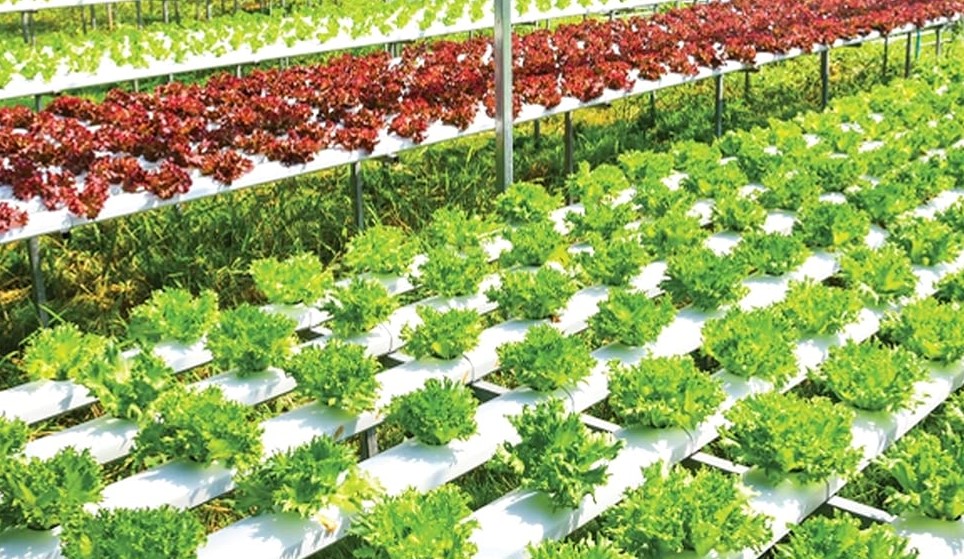Hydroponics is an innovative way to grow plants using nutrient-rich water rather than soil, making it ideal for those with limited space or those interested in eco-friendly gardening methods. This guide will walk you through the essentials of starting your hydroponic garden, from understanding the basics to selecting plants and troubleshooting common issues.
What is Hydroponic Gardening?
Hydroponic gardening is a soil-free method that uses nutrient-infused water to nourish plants directly. By delivering nutrients straight to the roots, hydroponics encourages faster growth and higher yields than traditional soil gardening. Since hydroponics can be done indoors or in small spaces, it’s perfect for urban dwellers or those with limited outdoor space.
Benefits of Hydroponic Gardening
- Space Efficiency: No need for large garden beds—hydroponic setups can fit in small spaces.
- Water Efficiency: Hydroponics uses less water than soil gardening since the water is recirculated.
- Faster Growth: Direct access to nutrients means quicker growth cycles.
- Fewer Pests and Diseases: Without soil, there’s a reduced risk of soil-borne diseases and pests.
- Sustainable Year-Round Gardening: Perfect for indoor setups, hydroponics allows you to grow plants all year.
Essential Equipment for Starting Your Hydroponic Garden
Here’s a basic list of items you’ll need to get started:
– Water reservoir: A container to hold your nutrient solution.
– Grow lights: LED or fluorescent lights to ensure plants get adequate light indoors.
– Air pump and air stones: Essential for oxygenating the water and preventing stagnant roots.
– Growing medium: Common options include rock wool, coconut coir, or perlite—these provide support and help anchor the plants.
– pH meter: A tool for monitoring and adjusting the water’s pH.
– Nutrient solution: Specially formulated for hydroponics, these contain all essential nutrients plants need.
You can buy starter kits that include these components, which simplifies the process for beginners.
Types of Hydroponic Systems
- Wick System: Ideal for beginners, this low-maintenance setup uses a wick to pull nutrient solution to the plants.
- Deep Water Culture (DWC): Plants are suspended in a nutrient solution with an air pump supplying oxygen to the roots.
- Nutrient Film Technique (NFT): Nutrient solution flows over the roots in a shallow stream, providing continuous feeding and aeration.
- Ebb and Flow (Flood and Drain): This setup periodically floods the roots with nutrient solution, then drains to allow aeration.
- Drip System: A timer-controlled system that slowly drips nutrient solution onto each plant.
For beginners, the wick system or DWC are good starting points because of their simplicity and low maintenance.
Choosing Plants for Hydroponic Gardening
Start with fast-growing, easy-to-maintain plants, such as:
– Leafy Greens: Lettuce, spinach, and kale are beginner-friendly and grow quickly.
– Herbs: Basil: mint, parsley, and cilantro are compact and thrive in hydroponic systems.
– Strawberries: They adapt well to hydroponic systems and produce rewarding yields.
– Tomatoes: While slightly more challenging, they do well in hydroponics with proper care.
Avoid plants with large root systems (e.g., carrots, potatoes) when starting out, as they require more space and specialized setups.
Setting Up Your First Hydroponic Garden
- Set Up the System: Arrange the water reservoir, air pump, and grow lights based on your chosen system. Position your setup where it gets adequate light, if using natural sunlight.
- Prepare the Nutrient Solution: Follow the manufacturer’s instructions to mix nutrients into the water and test the pH, aiming for a level between 5.5 and 6.5.
- Plant the Seedlings: Place your plants or seeds in the growing medium, ensuring they’re stable and have good access to water.
- Monitor the Environment: Regularly check pH levels, nutrient concentration, and water levels. Use grow lights to ensure your plants get around 14-16 hours of light each day.
- Observe and Adjust: Watch for signs of nutrient deficiency, such as yellowing leaves, and adjust nutrient levels or pH as needed.
Common Issues and Troubleshooting
– Algae Growth: Keep the reservoir covered to prevent algae, as light exposure encourages its growth.
– Nutrient Deficiency: Yellowing leaves or stunted growth can indicate nutrient issues. Test and adjust nutrient levels regularly.
– Root Rot: This can result from insufficient oxygen. Ensure air stones are working and the water is aerated.
– pH Fluctuations: Check pH daily; fluctuations can prevent plants from absorbing nutrients efficiently.
Final Tips for Success
– Start Small: Choose a small system and a few plants to get comfortable with hydroponics.
– Be Consistent with Maintenance: Set a regular schedule for checking pH, nutrient levels, and water quality.
– Keep Learning: As you gain confidence, experiment with new plants and more advanced systems to expand your garden.
Hydroponic gardening is a fantastic way to enjoy fresh produce and experience the joys of gardening, even in limited spaces. By following these tips and taking it step by step, you’ll soon be able to enjoy your very own thriving, soil-free garden.
